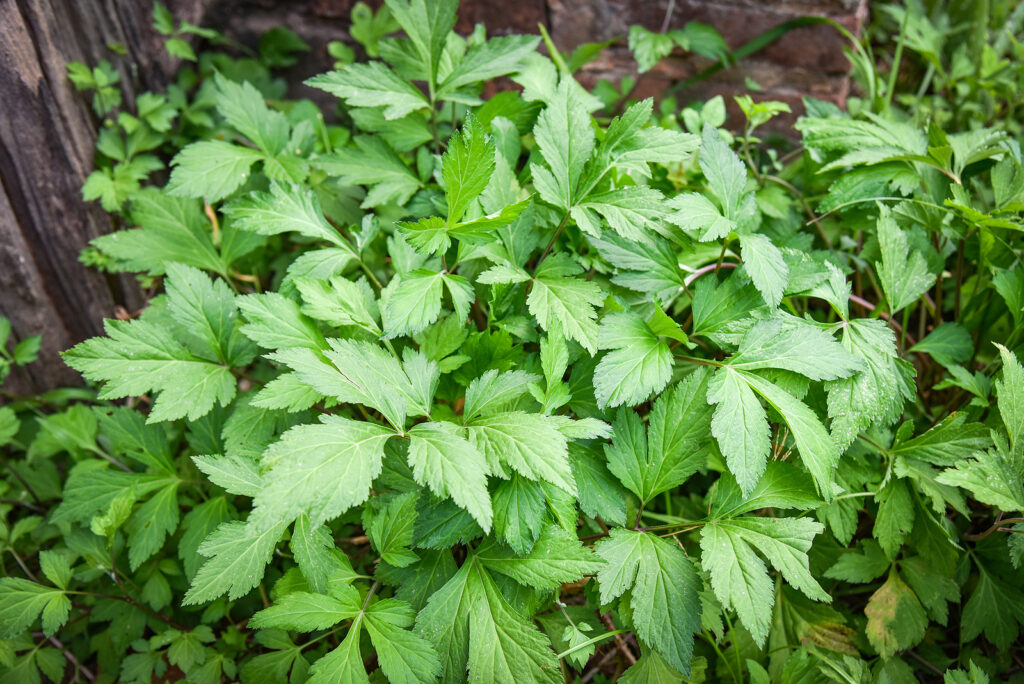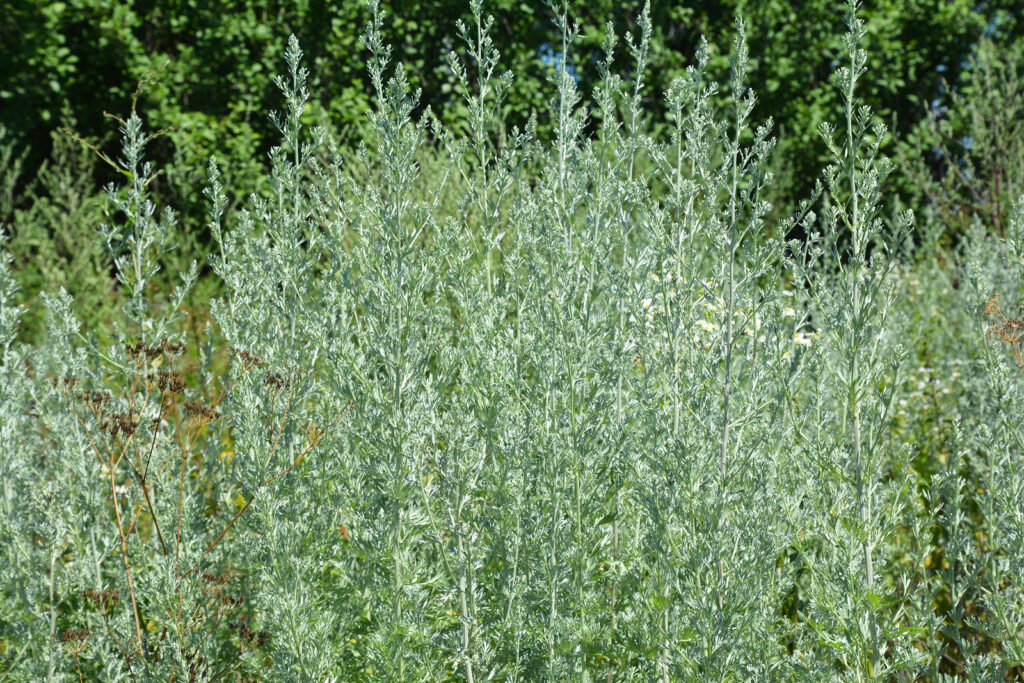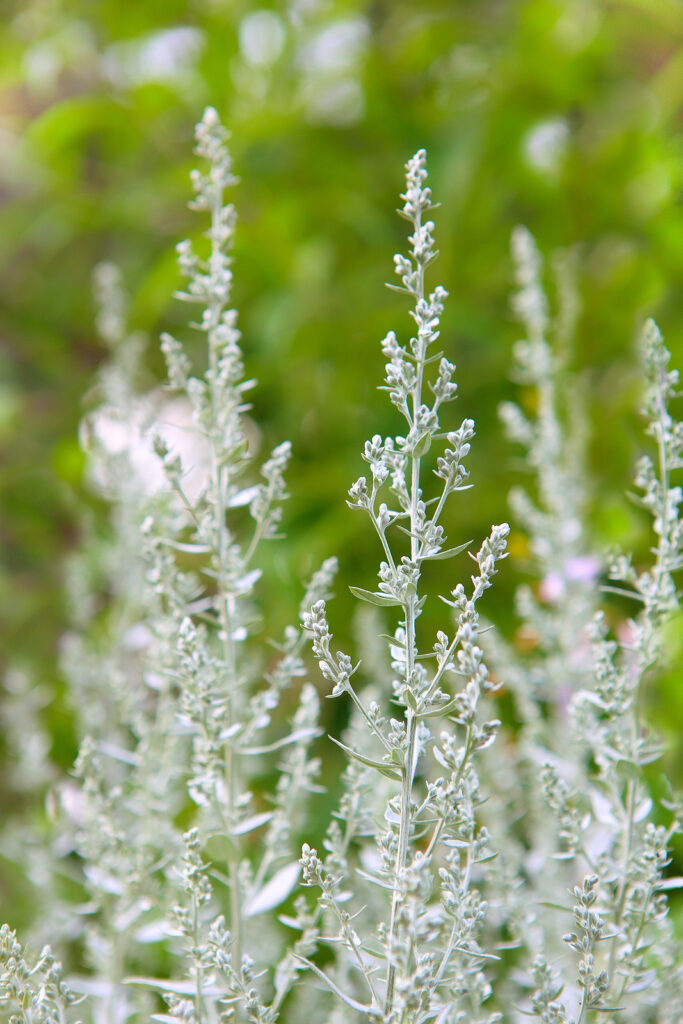Artemisia–commonly called wormwood–is a stout silvery-gray mound of feathery leaves which is almost wholly grown for the beauty of the foliage. Artemisia combined with other brightly colored perennials becomes a sort of color moderator acting to harmonize other plants with colorful, showy blossoms. The effect of wormwood is delicate rather than assertive.
Artemisia is a genus of hardy aromatic perennials or small shrubs, members of the Composite family. Artemisia flowers are small white or yellow head composed entirely of tubular flowers.
Artemisia is grown chiefly for their aromatic and medicinal qualities; the plants are also ornamental usually for the rear of the borer. Flowers are good for cutting.
Artemisia thrives in any average soil. They bloom from id summer through fall. The foliage of many species is so densely hairy that the plant appears white.
Propagation is generally by division, sometimes by seed.

Get to know Artemisia
- Plant type: Perennial
- Growing Zones and range: 3-10, varies by species
- Hardiness: Thrives in most gardens; hardy to -30°F/-34°C
- Height and width: 2 to 3 feet (60-90cm) tall; 24 inches (60cm) wide; can be trimmed to 18-inch mounds. Sprawling habit if not trimmed.
- Foliage Silvery mound of leaves; leaves are deeply lobed with soft hairs and aromatic
- Flower form and bloom time: Summer flowers are inconspicuous.
- Use: Use as an accent or combine with other perennials in a mixed border. Use as a filler between other plants—perennials and roses.
- Garden companions: Combine with yarrows and other drought-tolerant perennials; plant with ornamental grasses
- Common name: Wormwood, mugwort, Artemisia
- Botanical name: Artemisia species
- Family: Asteraceae
- Origin: Found in dry fields in the Northern Hemisphere
Where to plant Artemisia
- Plant Artemisia in full sun.
- Grow Artemisia in quick-draining sandy loam. Overly rich soil will cause weak growth.
Artemisia uses and companions
- Artemisia can be used in garden design as an excellent contrast to white, pink, blue, and lavender flowers in informal flower gardens.
- Good companions for Artemisia include Asclepias tuberosa, Baptisia australis, Echinacea purpurea, Sedum, Sisyrinchium striatum.

When to plant Artemisia
- Set Artemisia in the garden in spring or fall after the last frost.
- Plants can be started by division. Artemisia will self-seed.
- Sow seed in spring.
Planting and spacing Artemisia
- Space Artemisia plants 24 inches (61cm) apart.
- Sow seed 1/8 inch deep in evenly prepared soil.
How to water and feed Artemisia
- Avoid over-fertilizing or over-watering Artemisia.
- Allow the soil to dry out between waterings.

Artemisia care
- Cut Artemisia back in midsummer after blooming to keep plants compact and from getting rangy.
- Mulch to prevent soil from splashing onto plants; soilborne fungal diseases can attack Artemisia.
- Stems that become woody with age should be removed; this will allow the plant to renew itself.
- Remove unwanted sprouts and runners to keep the plant from spreading.
Artemisia pests and diseases
- White rust, downy mildew, powdery mildew, and rusts can attack Artemisia.
- Fungal leaf diseases and stem diseases can occur.
Artemisia propagation
- Divide Artemisia every year or two to keep the plant from becoming invasive.
- Grow from stem cuttings taken in late summer or spring; dust cutting with rooting hormone.
- Artemisia seed will germinate in 14 to 30 days at about 68°F (20°C); use fresh seed.

Artemisia varieties to grow
- Artemisia abrotanum is also called southern wormwood: shrubby plant can grow to 4 feet tall and as wide; absinthe is a beverage derived from this species; deeply divided aromatic leaves; cultivar ‘Lambrook Silver’ has deeply cut silver-gray foliage; hardy to -10°F (-23°C).
- A. absinthium has silky, silvery gray foliage ; grows 2 to 4 feet tall; hardy to 10°F (-12°C); ‘Lambrook Silver’ is a very good cultivar, also ‘Powis Castle’ with finely cut leaves is hardy to oF (-18°C).
- A. annua, sweet wormwood: deeply cut, featherlike leaves with sweet fragrance; grows to 5 feet tall.
- A. frigida has finely cut nearly white leaves and grow to 18 inches tall.
- A. lactiflora, white sage: can grow to 6 feet tall and 4 feet wide; deeply cut, dark green leaves; creamy white panicles of flowers.
- A. ludovicianna, white sage: silver-gray leaves to 3 feet tall or more; the plant can become invasive; cultivars include; ‘Silver Brocade’ is a bushy perennial; ‘Silver Queen’ is almost white.
- A. ‘Powis Castle’ is a shrubby perennial with feathery aromatic, silver-gray foliage.
- A. schmidtiana. silver-mound Artemesia: mounding to 2 feet tall; finely cut leaves is known as Angel’s hair with foliage to match; cultivar ‘Silver Mound’ forms mound and does not flop
- A. stelleriana, beach wormwood: compact grower to 12 inches tall; deeply cut lobed, felted white leaves; hardy to -30°F (-34°C).



